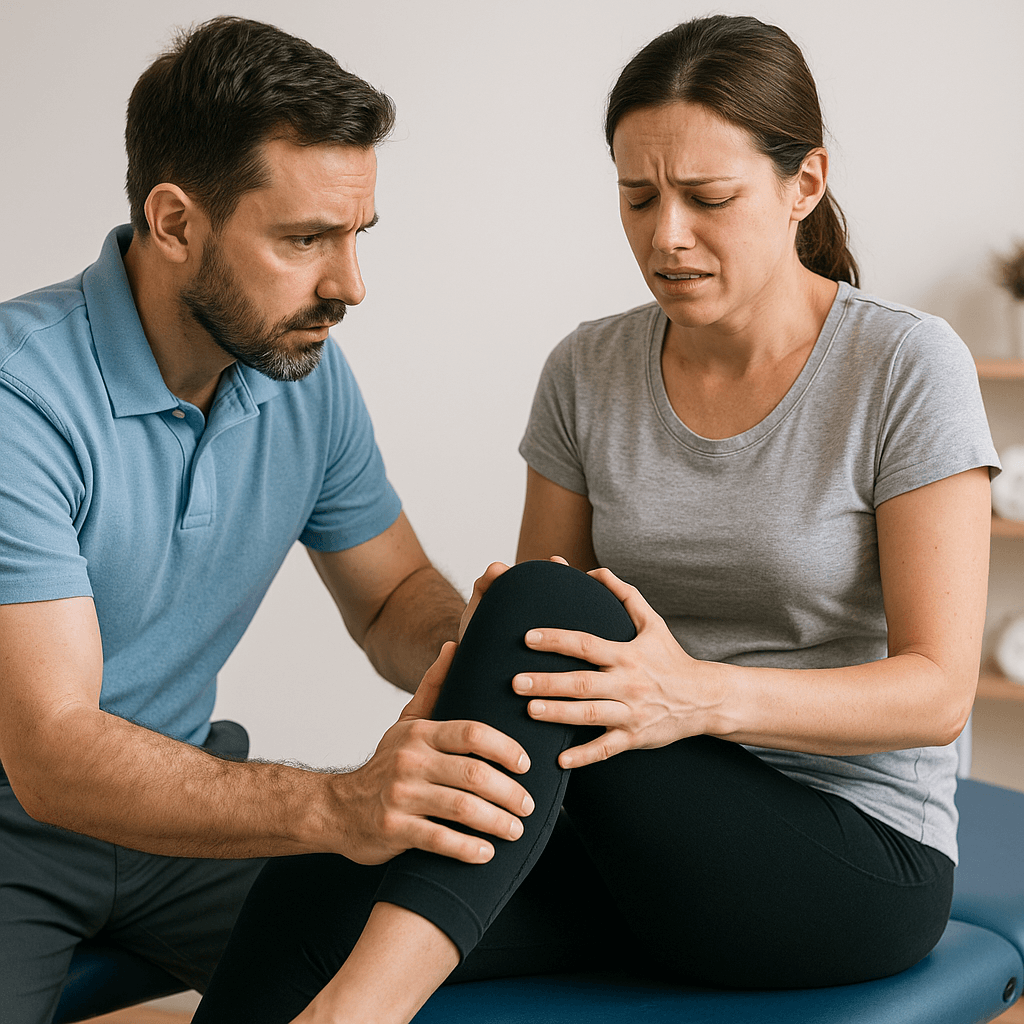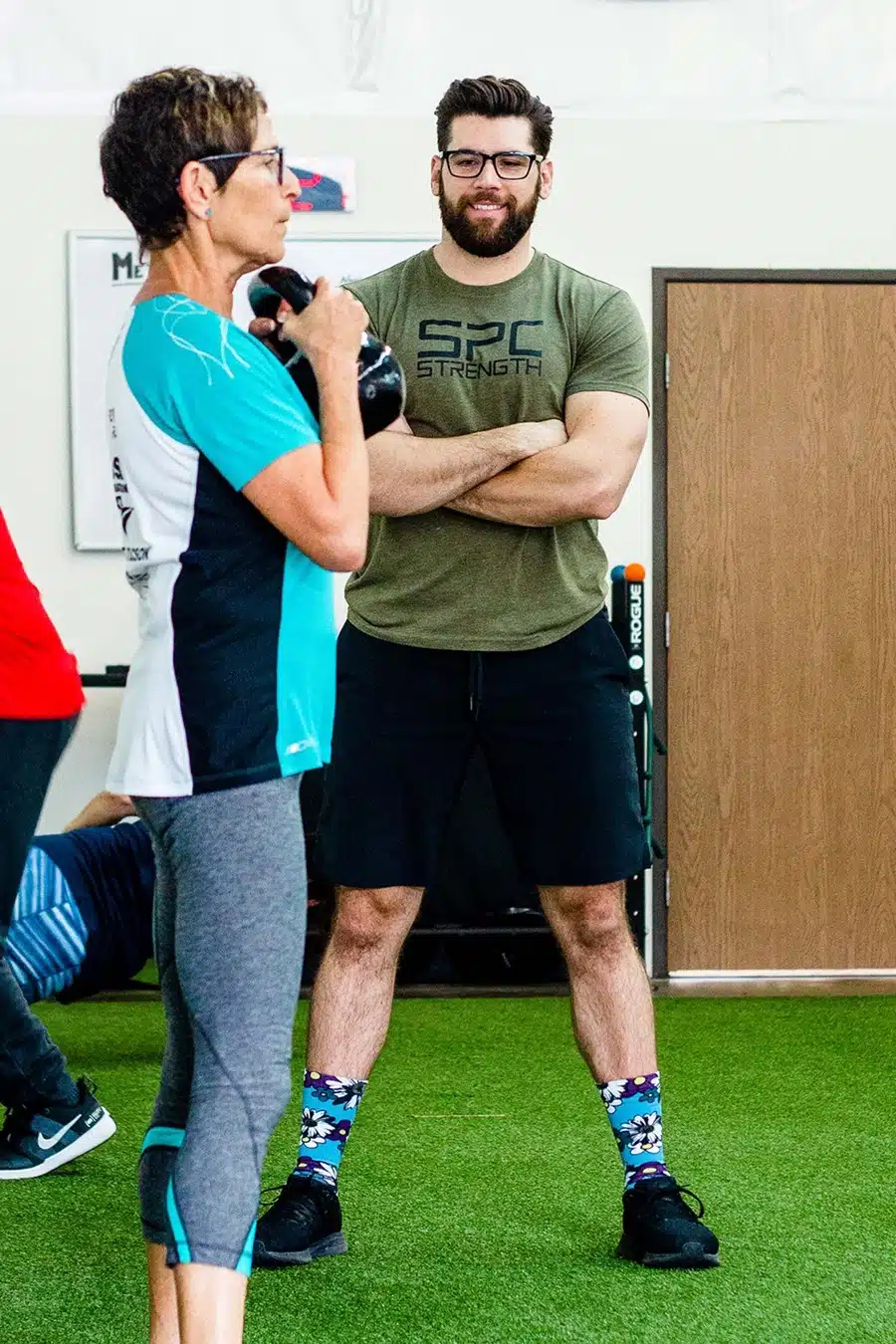At Smith Performance Center (SPC), our primary aim is to facilitate a healthy and active lifestyle for all our members. One of the tools we employ to overcome potential barriers to consistent exercise is the utilization of open clinics, which play a crucial role in addressing pain and injuries.
An open clinic session lasts for 15 minutes and serves four primary purposes:
- Assessing if the activity needs to be paused.
- Evaluating if your program requires modifications, whether it’s altering the overall program or adding specific physical therapy components.
- Determining if a more comprehensive medical evaluation is necessary, which might involve a referral for a full visit or consultation with an external healthcare provider.
- Creating a home plan to manage your issue outside of the regular workout sessions.
The genesis of the open clinic concept dates back to January 2018 at Smith Performance Center. Initially conceived as a space for members to report new injuries, discomfort, or movement issues, these sessions soon became integral to our strength training approach. On the first weekend, our physical therapist triaged six people. Now after five thousand sessions, we recognize their significance in supporting a healthy lifestyle.
Why do open clinics matter?
Injury prevention, often a cornerstone in healthcare and fitness, presents challenges.
Being active inherently involves a degree of injury risk. While we can mitigate these risks and promptly address emerging issues, preventing injuries altogether remains impossible. A key insight driving our shift in perspective is that most individuals discontinue exercise due to pain or injury, not a lack of motivation. Additionally, orthopedic injuries might be more prevalent than current research indicates, making it challenging to distinguish between manageable discomfort and conditions requiring medical intervention.
Transitioning from an injury prevention model to an exercise relapse prevention model has been crucial.
Traditional injury prevention strategies often rely on medical screenings, which are inherently limited:
- False positives or negatives can lead to unnecessary anxiety or delayed treatment.
- Overdiagnosis might prompt unnecessary medical interventions.
- Anxiety and psychological impact may result from screening procedures.
- Screenings might overlook individual variations, leading to generalized conclusions that don’t apply to everyone equally.
We initially attempted injury screenings on a quarterly basis, hoping to reduce injury rates, but found they didn’t effectively prevent injuries and sometimes triggered anxiety in individuals.
This realization led us to adopt a different approach – addressing issues as they arise within the context of regular workouts.
The essence of exercising is accepting the inherent risk of injury. While ceasing exercise might seem the immediate solution, it’s a detrimental choice as exercise remains paramount for overall health.
Key Insights: Injury Prevention vs. Strength Training Support By Physical Therapy
In reevaluating the traditional approach to injury prevention in strength training, our team shifted focus from solely preventing injuries to a more nuanced perspective centered on sustaining exercise habits. This shift led to a deepened understanding of the relationship between injury prevention, exercise, and overall health. Here are our core insights:
- Injuries are anticipated, and certain anatomical factors make preventing injuries impossible.
- The research concept of injury prevention differs from its practical application.
- Singular activities might not effectively prevent injuries.
- Emphasizing movement proficiency in workout plans mitigates injury risks due to poor movement patterns.
- Early intervention in case of injury reduces the likelihood of discontinuing exercise. A single screening test might not suffice for a diverse population striving for an active lifestyle. Therefore, exercise programs and issues specific to movements are instrumental tools for training.
- While screening has its benefits, the associated risks are often overlooked. With injury screening, individuals might develop a fear of activity despite exercise being the primary contributor to health benefits.
- Consistent, habitual exercise supersedes the endeavor to prevent an injury that can be managed effectively if detected early.
Why and when should you schedule an Open Clinic?
Understanding the significance of open clinics within our strength training system, here is how you can use them effectively.
There are various reasons to schedule an open clinic visit:
- Sensing pain or discomfort during specific lifting movements.
- Experiencing intermittent dull aching pains upon waking up.
- Feeling restricted motion in a joint or muscle.
- Noticing new pain or recurrent symptoms from a previously managed issue.
Once you’ve identified such symptoms, it’s advisable to schedule an open clinic session. Our physical therapist will guide you regarding the next steps. It could involve adding a corrective exercise to your program, necessitate a full PT visit, or perhaps require a deload period with monitoring from our strength coaches.
If you’re unable to find a suitable appointment time or if your issue is urgent, please reach out to a member of the SPC team for assistance in scheduling an earlier session with the PT.







